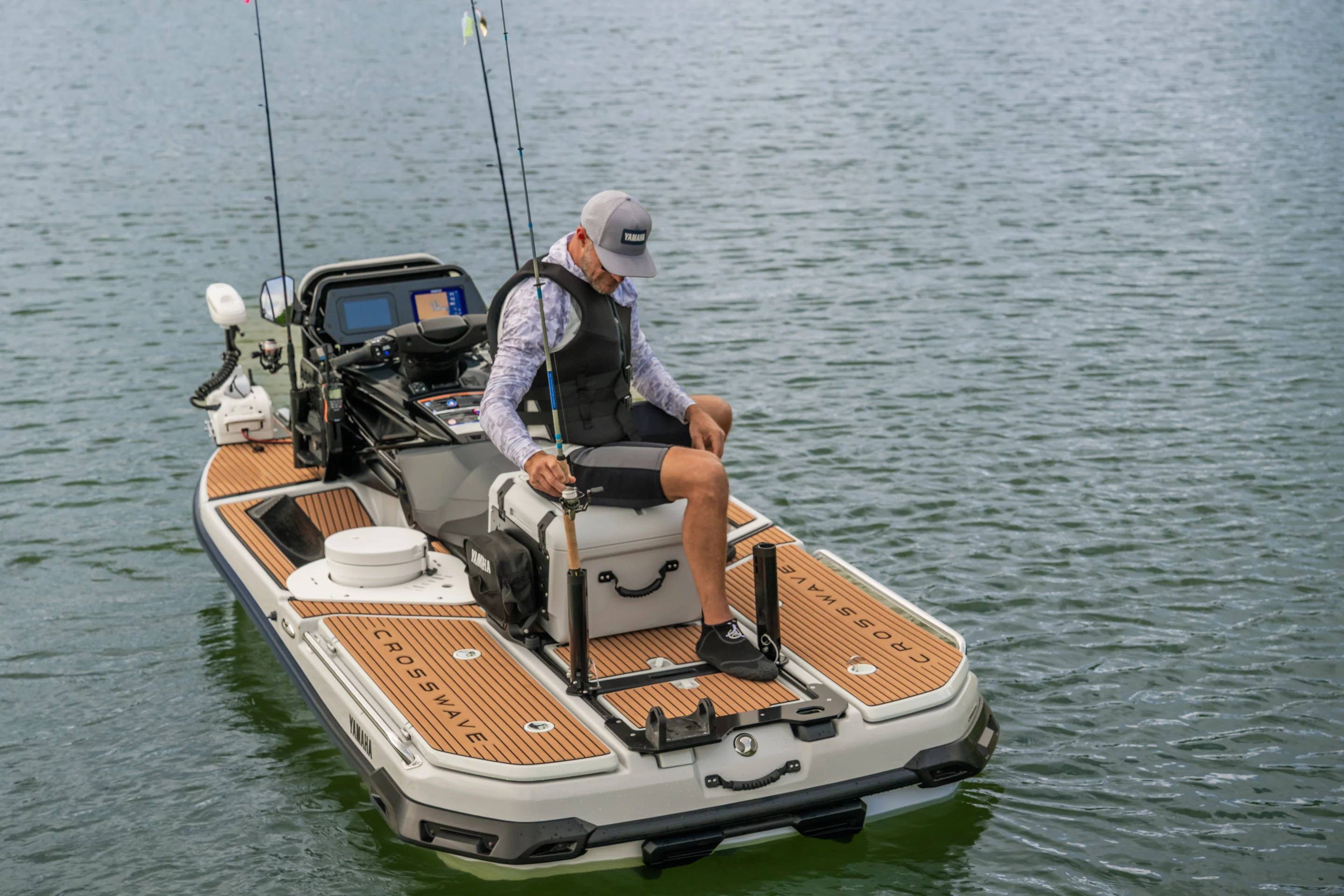The instant you see the all-new CrossWave, you realize it's not your average personal watercraft (PWC, i.e. jet ski), even though it's technically part of Yamaha's WaveRunner PWC lineup. It's really a new type of speedy, nimble watercraft meant to split the difference between the PWC as we've known it previously and a larger water jet-powered sport boat. Essentially a jet ski plopped in the middle of a big, 360-degree deck, the modular machine seamlessly blends full-throttle thrills into a versatile, long-range adventure platform pilots can use for fishing, exploring distant stretches of water, and ... whatever else they want.
USA-based Yamaha Watercraft already offers a lineup of sporty jet boats ranging between 19 and 29 feet (5.8 and 8.8 m) and the separate WaveRunner PWC family, so why not bring them crashing and screaming together into a single genre-blurring ride that does more with less – less than buying two separate vessels, at least.
We suppose if you want to wakeboard or hit the water with more than four people, you'll still need to size up to a full boat, but the CrossWave WaveRunner (Crosswaverunner, perhaps, Yamaha?) definitely splits the difference between Yamaha Watercraft's traditional categories.
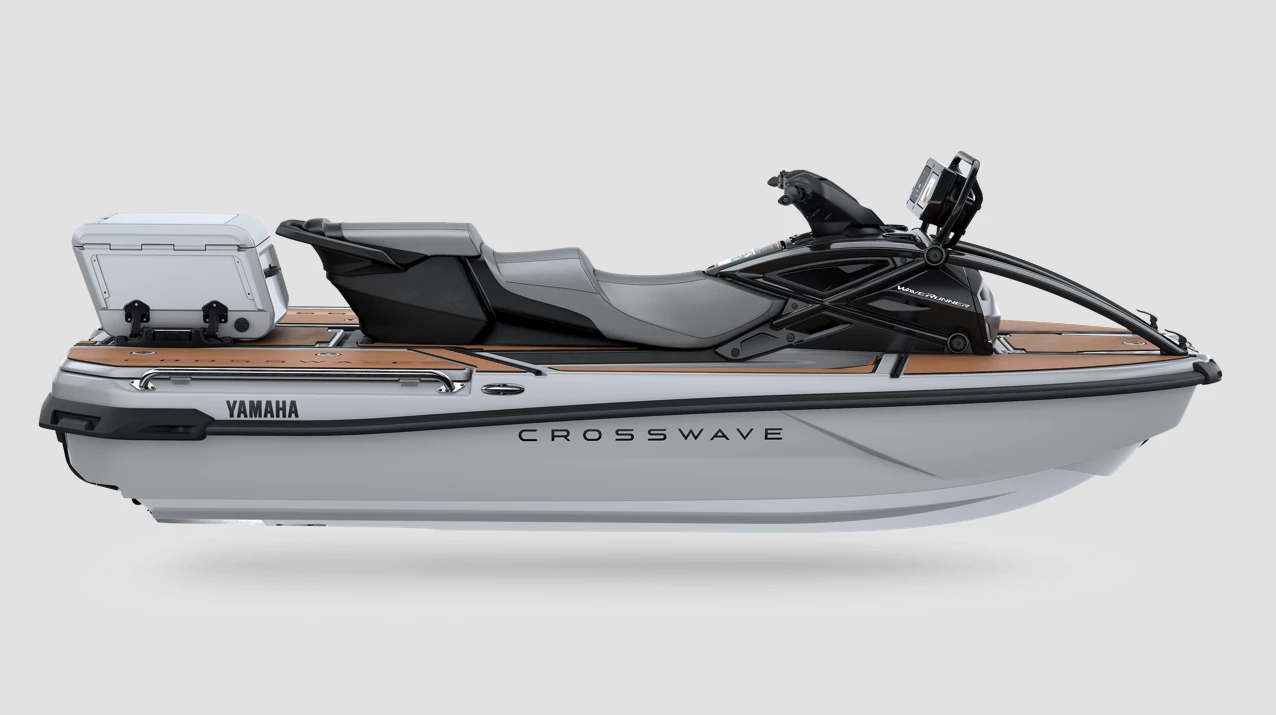
"This isn’t about going faster or carving harder,” explained Yamaha Watercraft's general manager Bryan Seti. "The CrossWave is about going farther and doing more — with the space, flexibility and purpose that a growing segment of the PWC industry has been waiting for. It’s part utility vessel, part explorer and 100% Yamaha."
So then, something like a recreation-utility four-seat side-x-side for the water. Yamaha further explains the CrossWave is designed to broaden out the boundaries of the emerging PWC Adventure category. Sea-Doo doesn't slap an "Adventure" category label on its Explorer Pro, instead presenting it as a "Touring" model, but the Explorer Pro series does appear to be the existing craft that best fits the bill, designed for farther, more gear-heavy PWC adventures.
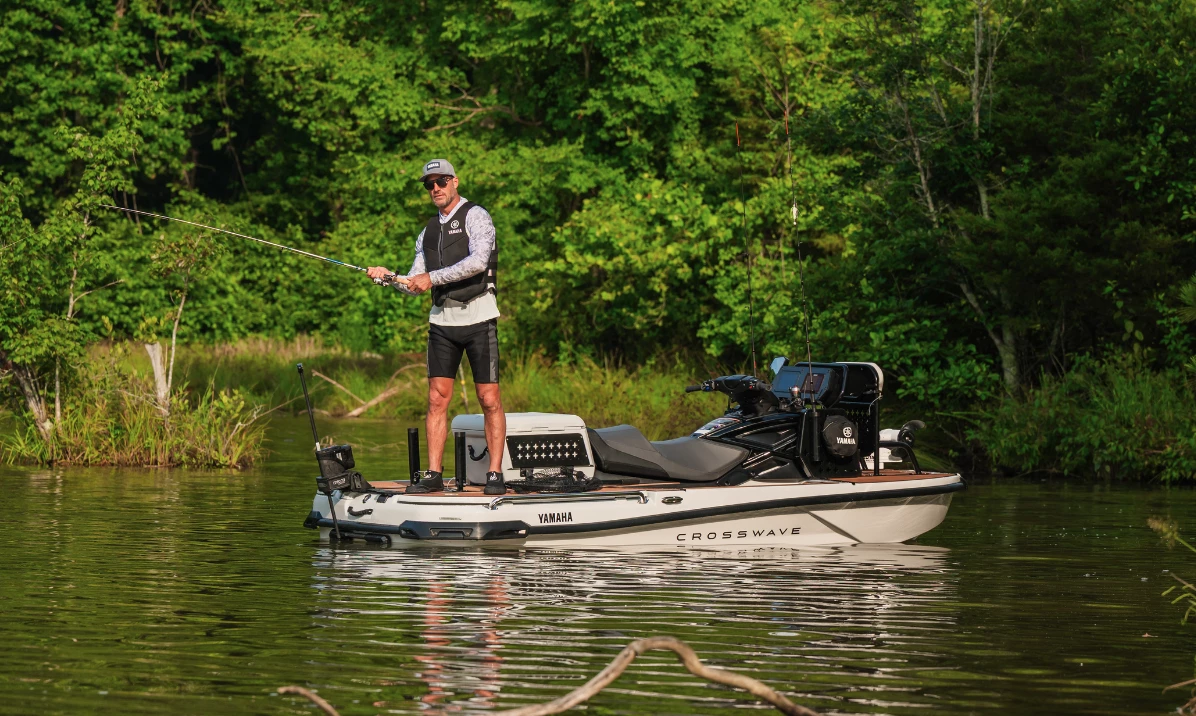
Yamaha takes the concept of that "Adventure" category a step further toward a full boat. The idea is to spend more time out on the water exploring the surroundings – distant coastlines, inlets, islands, rivers, etc. Perhaps you can even bring camping gear along for a multi-day adventure – extra space and modular storage make that easier. Imagine straight-up gnarly adventures like this one but with a vessel built to the task.
Meanwhile, the CrossWave may not be designed for all-out speed runs or championship handling, but the low-centered, PWC-style saddle and handlebars promise to make it more fun and visceral to ride than any old boat. It looks like someone simply dropped a WaveRunner smack inside a floating boat deck with a cutout in the middle, secured it all together and set willing adventurers free on the water.
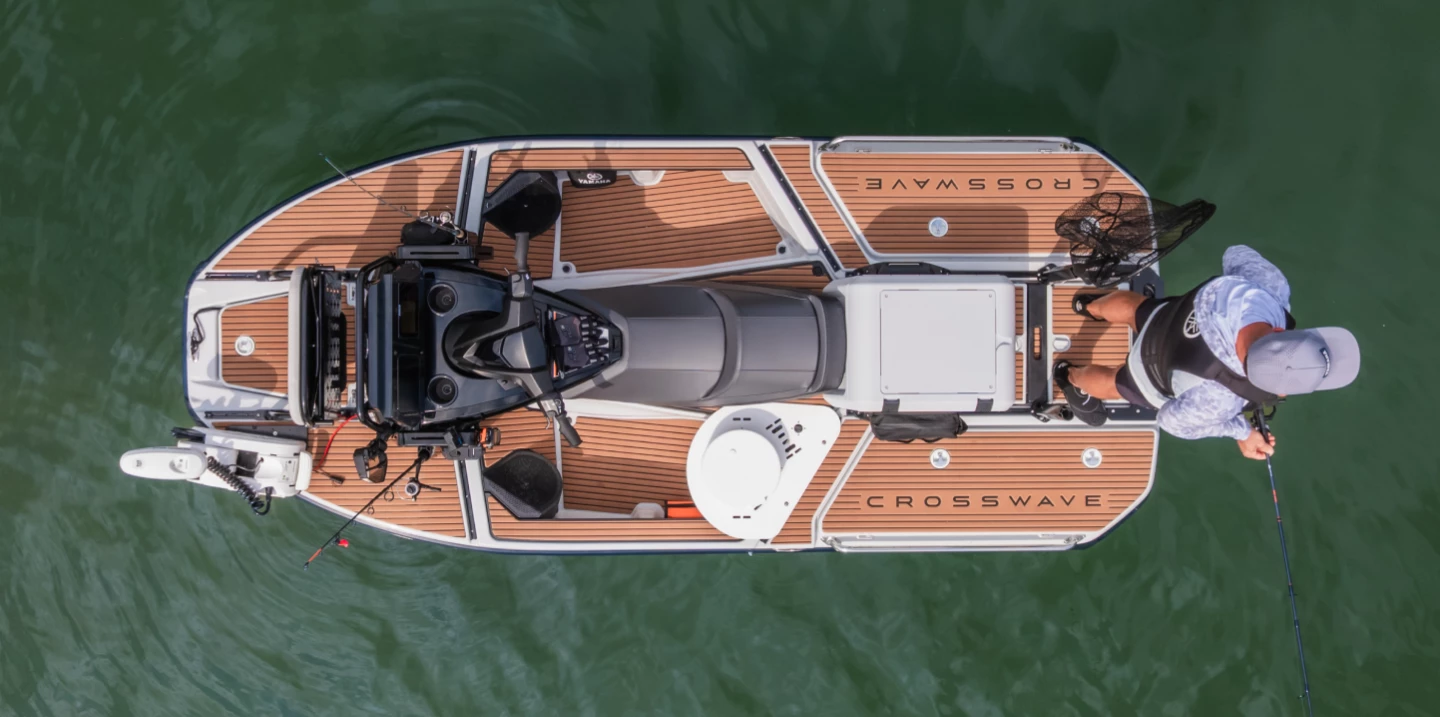
The 360 degrees worth of deck space give the CrossWave far more storage space and passenger mobility than you could ever hop to get on a traditional PWC. That increases the vessel's all-day comfort level, on-water stability and day-to-day flexibility. The 13-foot (4-m) CrossWave adds nearly 2 feet (61 cm) of length compared to Yamaha's WaveRunner FX luxury series, plus about 1.5 ft (46 cm) of width.
Yamaha bills the CrossWave as the first PWC in the industry to feature that type of wraparound deck, and while we have covered mini-boat/PWC hybrids in various forms, nearly all of them lacked a 360-degree deck, including a 15-year-old effort also based around a Yamaha WaveRunner. The one model that proved an exception had a narrower deck sunken below its gunwales, not the flat, open swimming platform-like deck of the CrossWave.
The CrossWave cockpit spreads out via a floating instrument panel comprising a pair of 7-in screens: a color touchscreen display and a 7-in Simrad NSX chart plotter/fish finder. To meet the brief of taking riders farther, Yamaha feeds the 1.9-L high-output engine from a 100-L fuel tank for plenty of on-water range. It calls it the largest displacement engine in a PWC and promises smooth, quick acceleration and plenty of top-end speed potential.
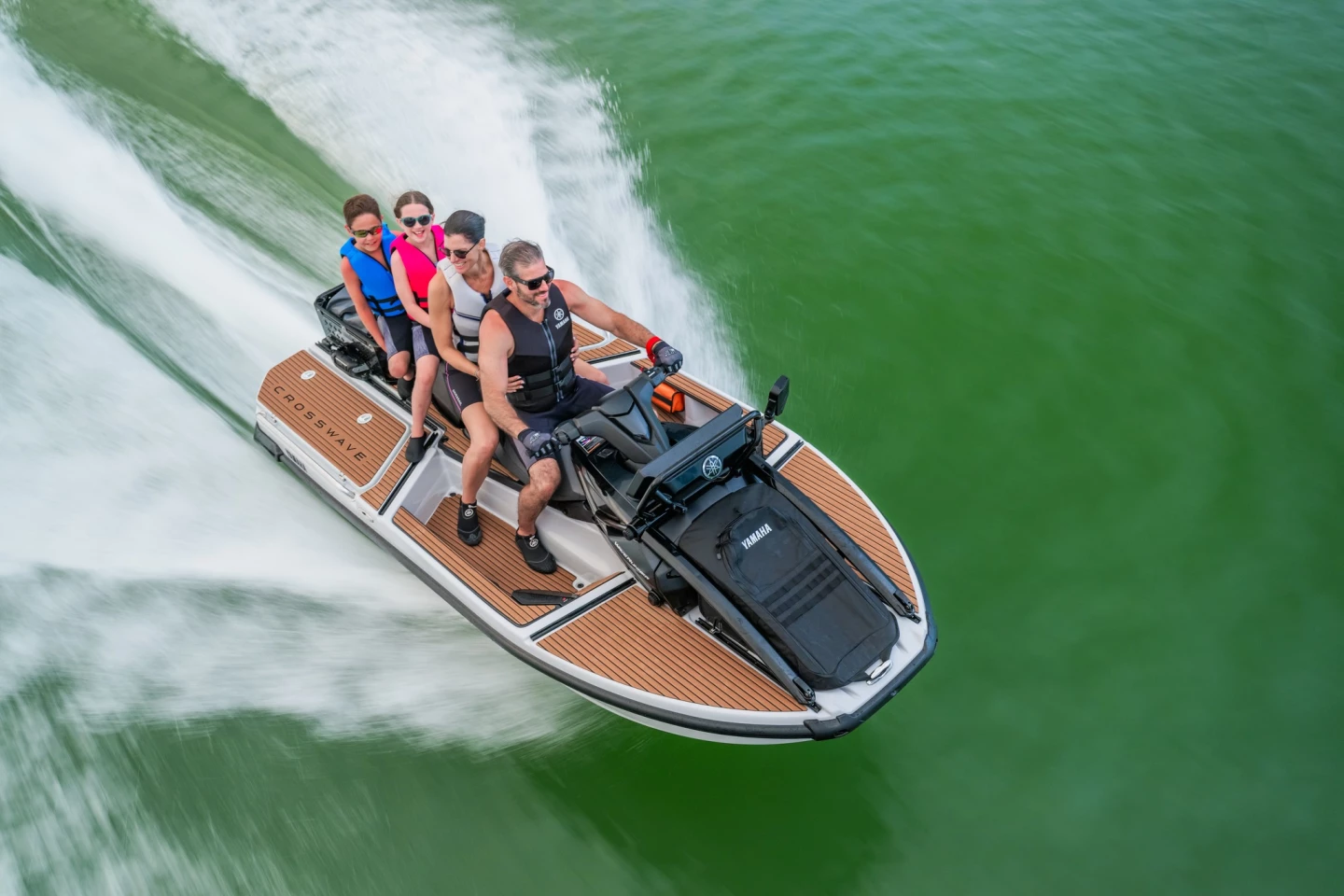
The inner edges along much of the CrossWave's deck paneling are bordered by T-track similar to what you'll find all over camper van buildouts, truck topper frames and vehicle roof racks, providing plenty of mount-down points for accessories. Yamaha plans to tempt buyers' credit card fingers with a full lineup of such accessories, mentioning trolling motor brackets, fishing rod holders and shallow water anchors as a few early ideas.
Beyond that versatile mounting track, the CrossWave offers 310 liters of dedicated storage capacity, including a rod compartment, bow anchor locker and dual in-hull stern compartments.
As for passenger capacity, the CrossWave leaves the sea of two-seat competitors far behind, doubling seating for up to four people. Staying true to its PWC-leaning underpinnings, it seats all four one behind the other atop a pair of two-person saddles. For trips with only one or two people aboard, the rear passenger seat removes to free up more space for cargo.
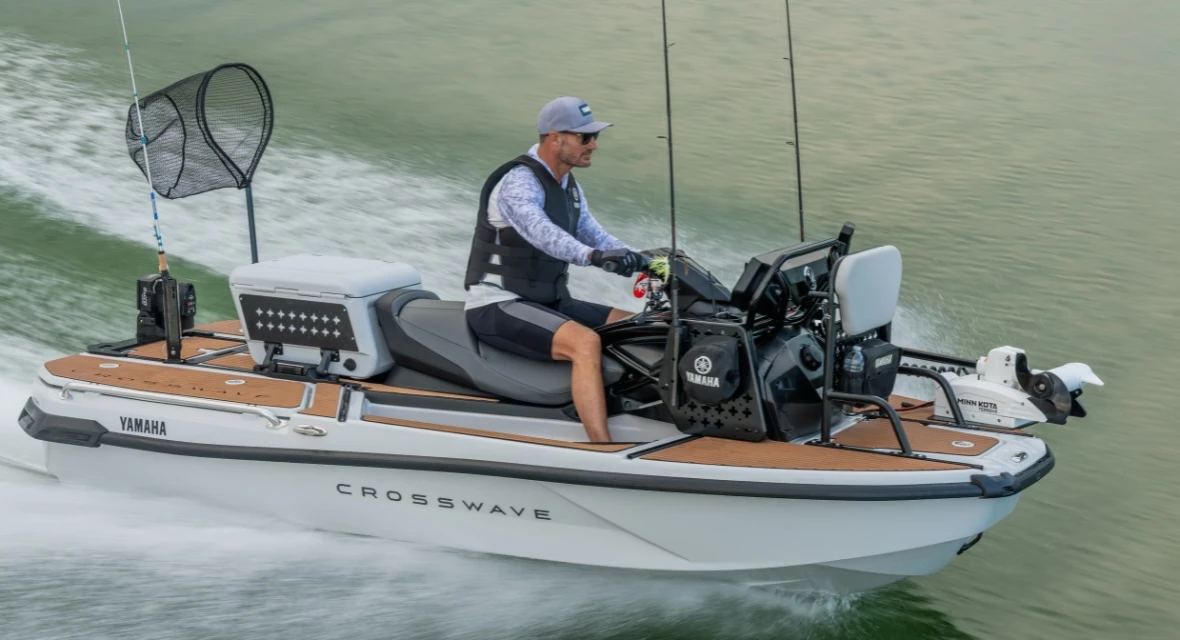
The CrossWave WaveRunner is still a prototype at the moment, and while Yamaha gave it an introduction this week, it won't be announcing pricing until closer to its US launch in Spring 2026. What we do know from Yamaha's currently advertised MSRPs, though, is that the WaveRunner base pricing tops out at US$22,199, leaving a big gap before the slightest worry of bumping up against its entry-level $39,999 jet boat.
Yamaha plans to sell the CrossWave in just one fully equipped trim with 8-in Bluetooth speakers in the footwells, prepping for additional audio components, prewiring for a Group 24 deep-cycle marine battery with on/off switching, a 55-in cooler and a marine trailer. In place of opting up to higher trim levels, buyers will be left to focus on personalizing their vessel from the a la carte accessories catalog. The CrossWave will be sold through Yamaha's nationwide network of WaveRunner dealers.
Source: Yamaha






